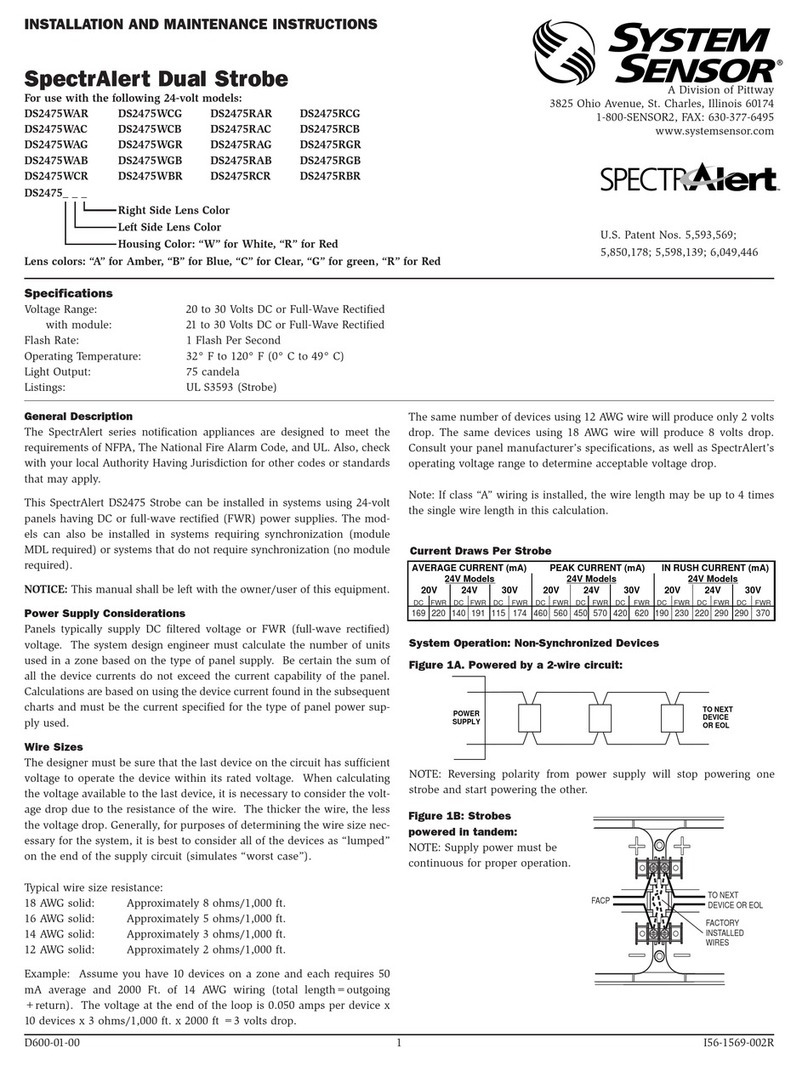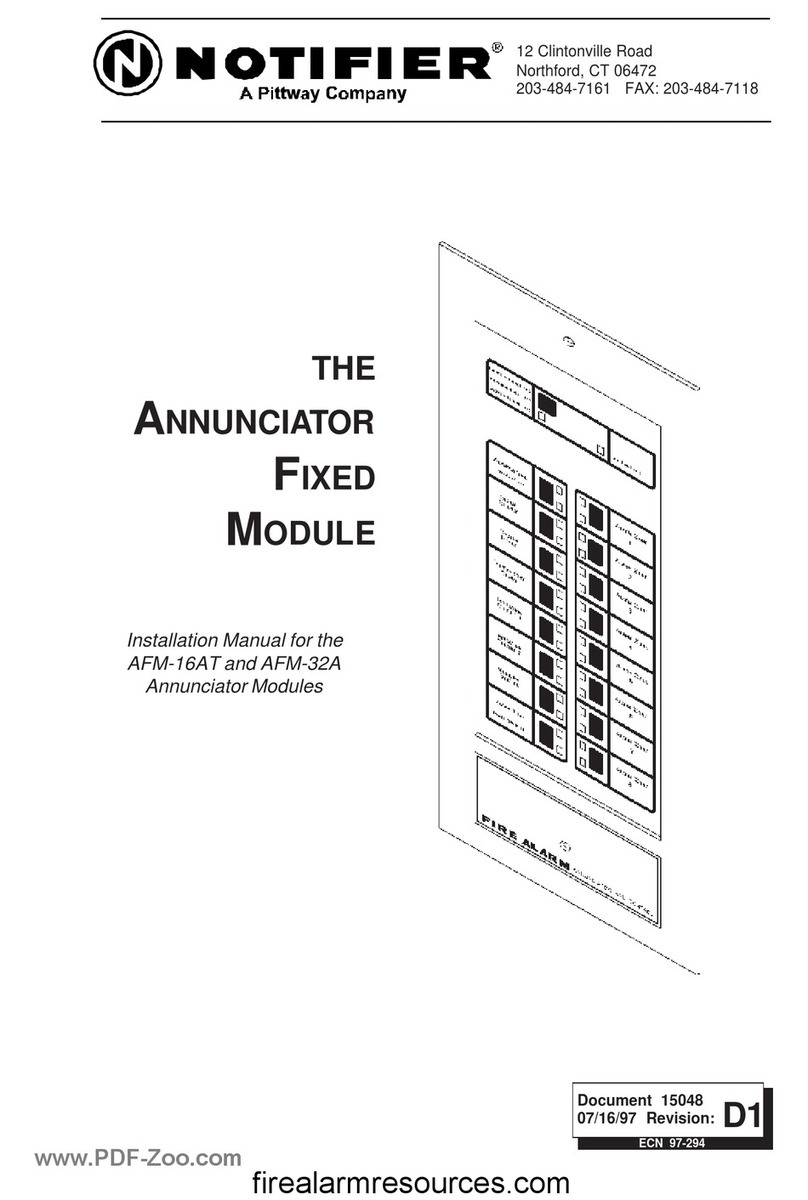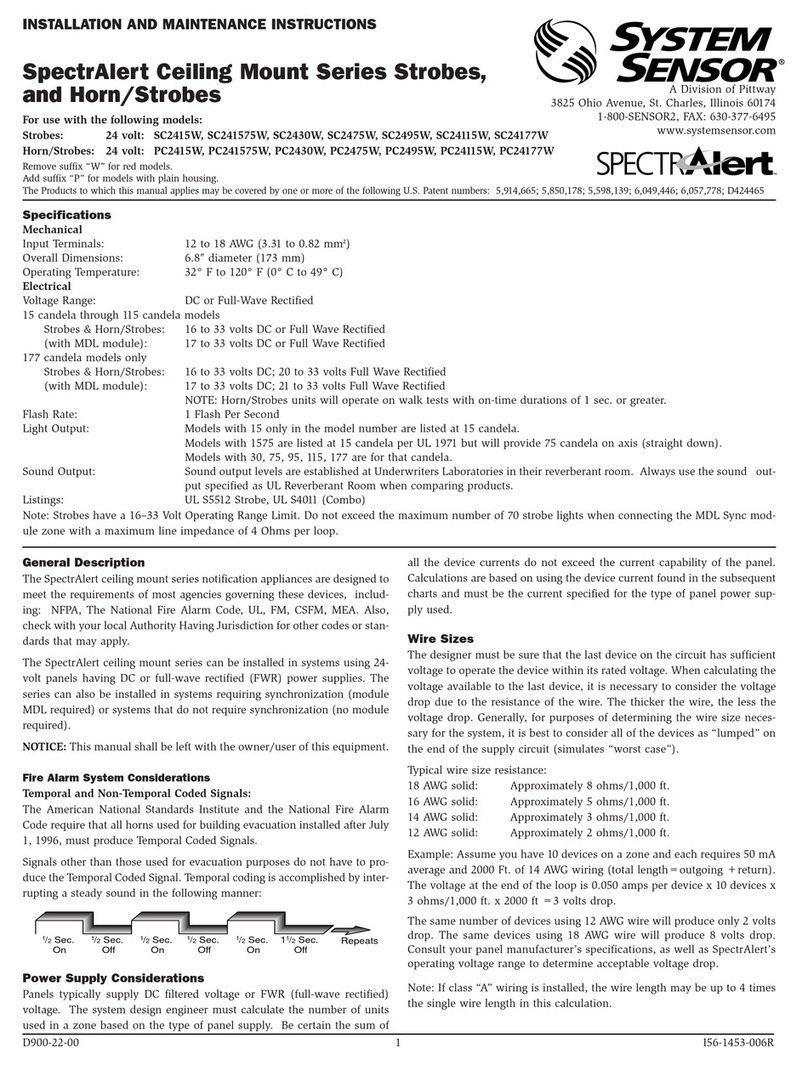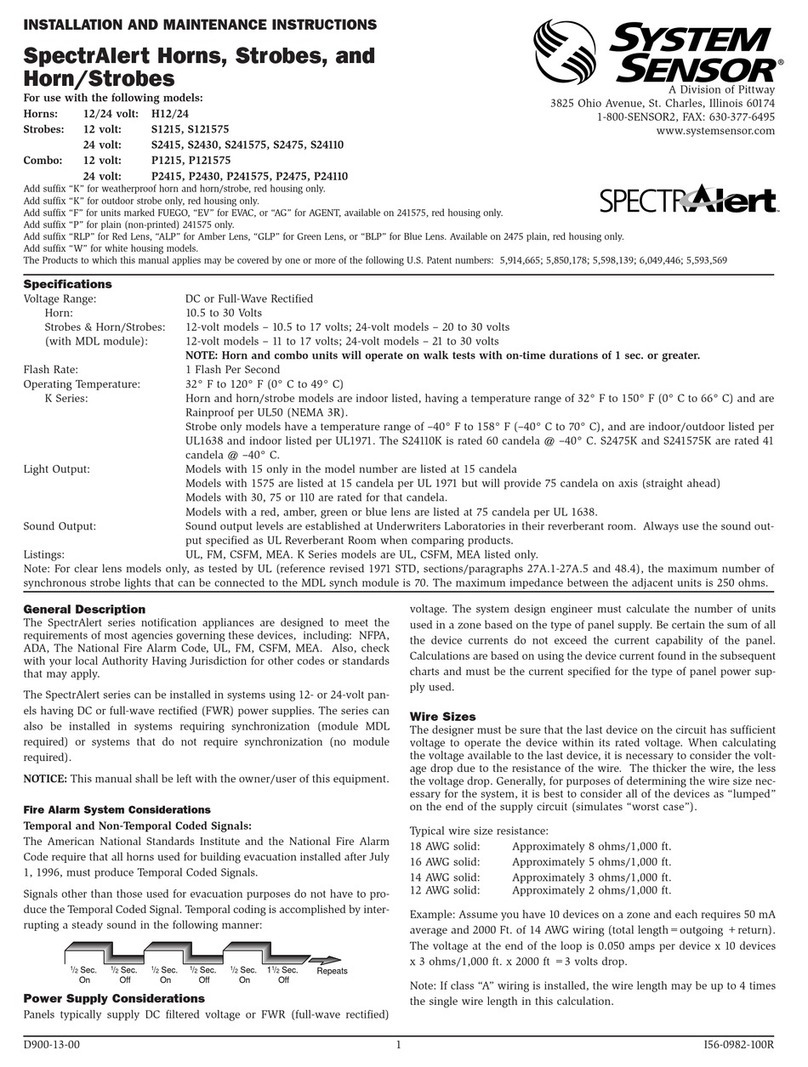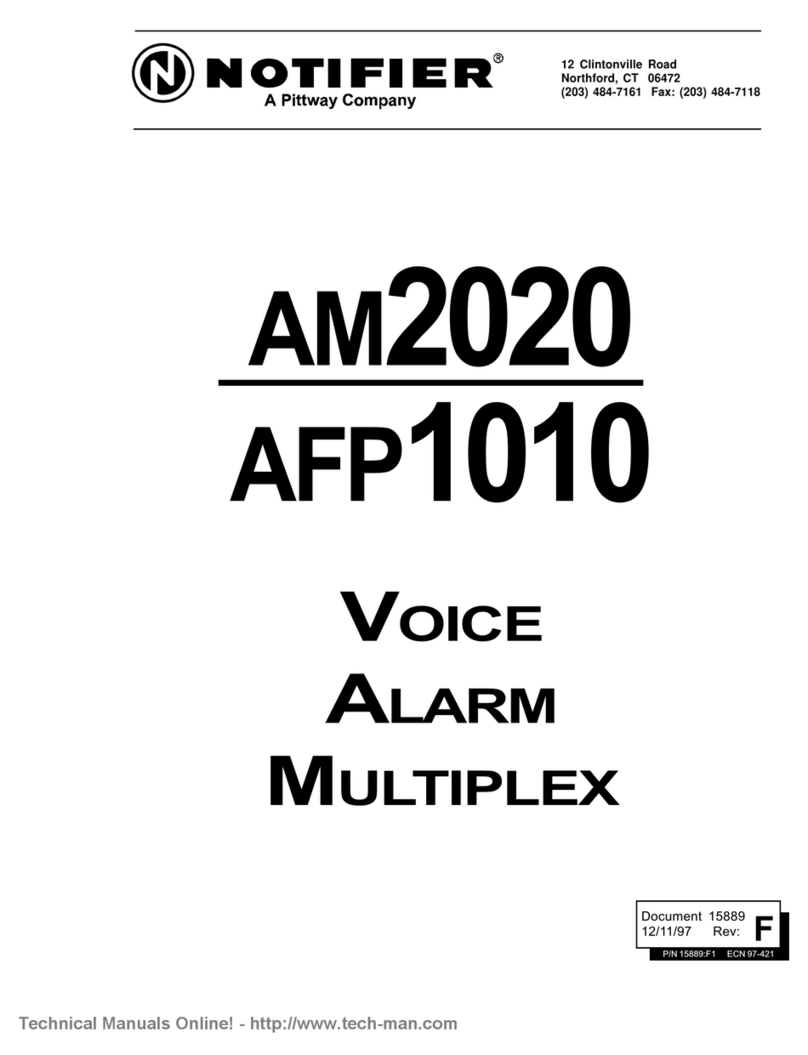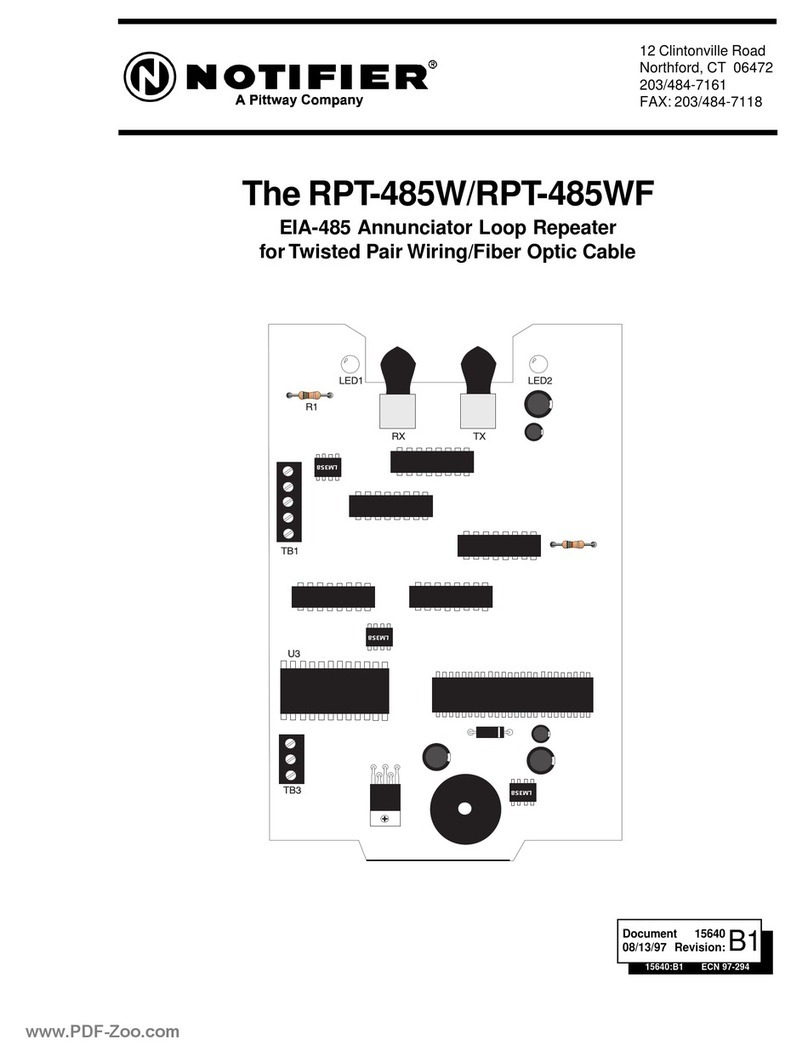
AFP 300/400 INSTALLATION AND PROGRAMMING MANUAL PAGE 3
COPYRIGHT © 2000, NOTIFIER INERTIA PTY LTD
Programming....................................................................................................................... 20
OVERVIEW ......................................................................................................................................20
Turning the Panel on for the first Time 20
How to enter a ‘Default’ Program...............................................................................................................20
Program Mode Screen...............................................................................................................................21
Clear Program............................................................................................................................................21
Autoprogram ..............................................................................................................................................21
Duplicate (Dual) Addressing.................................................................................................................................22
Default Autoprogram Screen.................................................................................................................................23
Autoprogram Defaults...........................................................................................................................................23
Autoprogram- Device no longer needed....................................................................................................24
Installing a Device......................................................................................................................................24
Edit a Point.................................................................................................................................................24
Modifying a Point........................................................................................................................................24
Editing Multi Detector Mode.......................................................................................................................25
Programming Cooperative Multi-Detector...........................................................................................................25
Delete a Point.............................................................................................................................................26
Password ...................................................................................................................................................26
Message - Change the “SYSTEM NORMAL MESSAGE”.........................................................................26
Zone Labels ...............................................................................................................................................27
Special Zones ............................................................................................................................................27
F5-F6 (TIME CONTROL).....................................................................................................................................28
F7 (Holiday)..........................................................................................................................................................28
System Functions 29
Annunciator selection 30
Annunciator Groups...................................................................................................................................30
Annunciator Group 1.............................................................................................................................................30
Annunciator Group 2.............................................................................................................................................31
Annunciator Group 3-5 .........................................................................................................................................31
Annunciator Group 6 – 8.......................................................................................................................................31
System Check Function.............................................................................................................................32
Status Change 32
Isolate a Device or Zone............................................................................................................................33
Change Sensitivity .....................................................................................................................................33
Clear Verification Counters........................................................................................................................33
Clear History..............................................................................................................................................34
Time and Date............................................................................................................................................34
Walk Test...................................................................................................................................................34
Type Codes (ID’s) 35
Monitor Module’s........................................................................................................................................35
Type Codes for Monitor Modules..........................................................................................................................35
Control Module’s........................................................................................................................................36
Type Codes for Control Modules...........................................................................................................................36
Panel’s Monitored Output Circuits .............................................................................................................36
Control-By-Event Programming 37
CBE Equation........................................................................................................................................................37
Automatically Change sensitivity ..........................................................................................................................37
Nominal Detector Sensitivity 38
Self Optimising Pre-Alarm ....................................................................................................................................38
Sensitivity Levels for the AFP-400: (Graph)...............................................................................................39
Sensitivity Levels- Autoprogram Default Tables:..................................................................................................40
Technical Manuals Online! - http://www.tech-man.com
